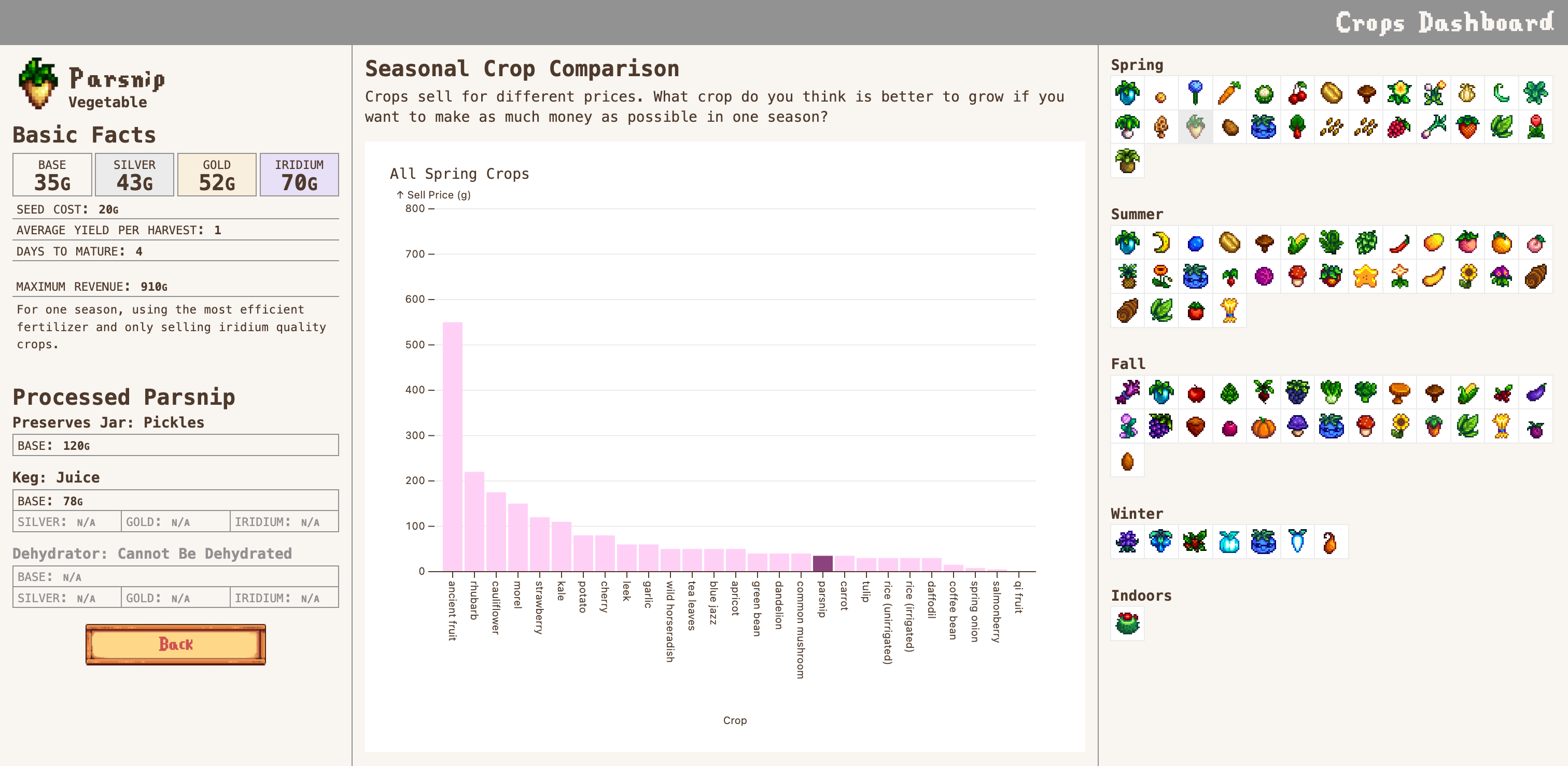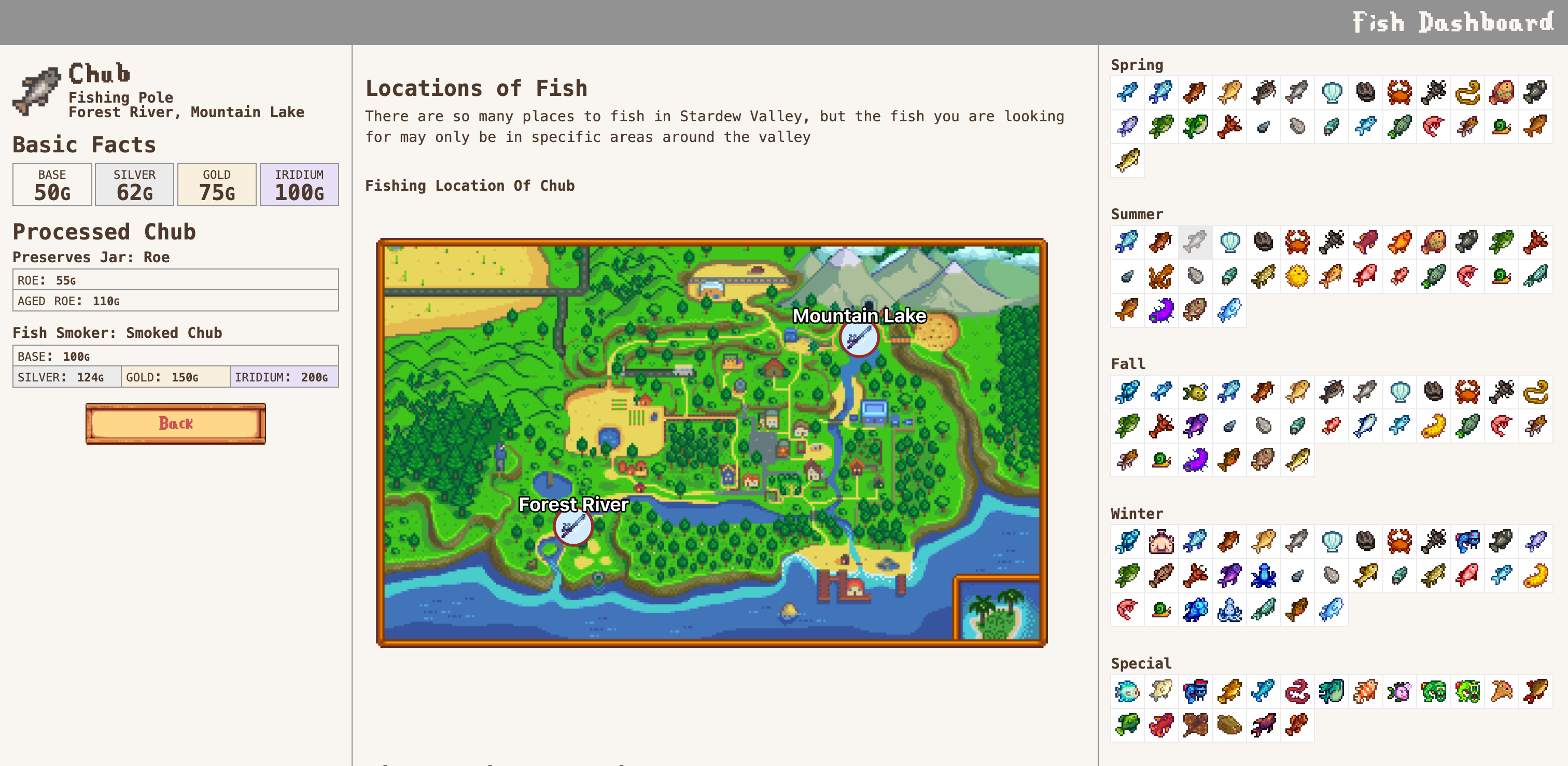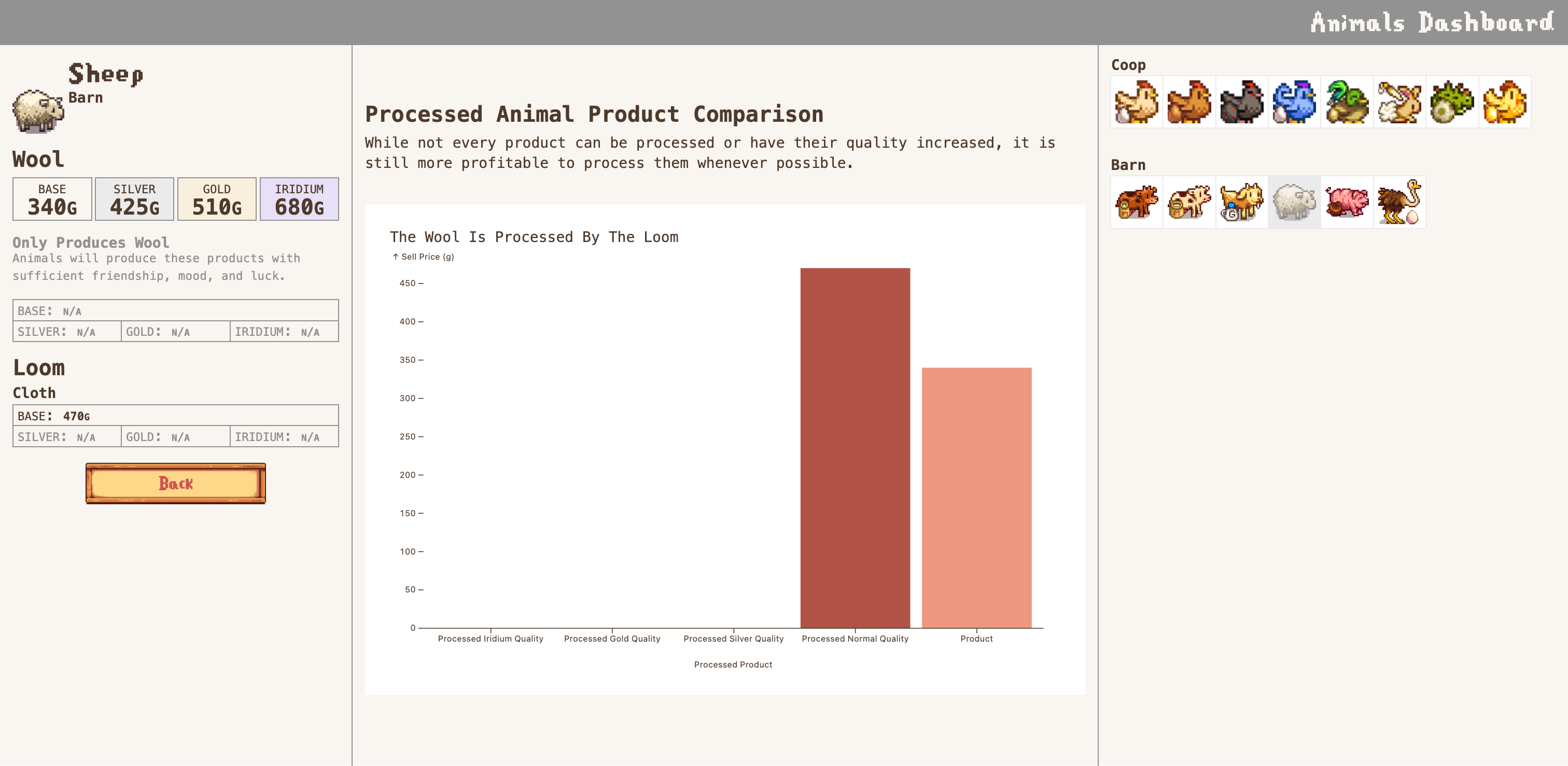Research and Testing
Initially, this project focused on crop pricing. We conducted EDA to establish trends in availability and effects of gameplay mechanics such as processing to increase in-game profits. We preseted some of these charts to three participants, along with rough paper wireframes, and asked them a series of question to guage understanding.
Overall the participants struggled to interpret some of the labels of the graphs and the overall structure of the visualizations including unclear axis titles and terminology such as “type of product” or “number of harvest”. Less advanced players expressed more confusion and less certainty over the purpose and functions of the visualizations. All participants spoke their questions aloud while working through tasks, suggesting persistent ambiguity around how to get started or interact with the data effectively. One participant was unsure if clicking would reveal more information and didn’t initially realize the dashboard was interactive. Another initially missed that the visualizations required scrolling and expected immediate results from clicking the icons.
We did our best to address these issues in our final design, and realized that without sufficient instruction and labeling, even users that are passively familiar with the data will have a difficult time interpreting it.


